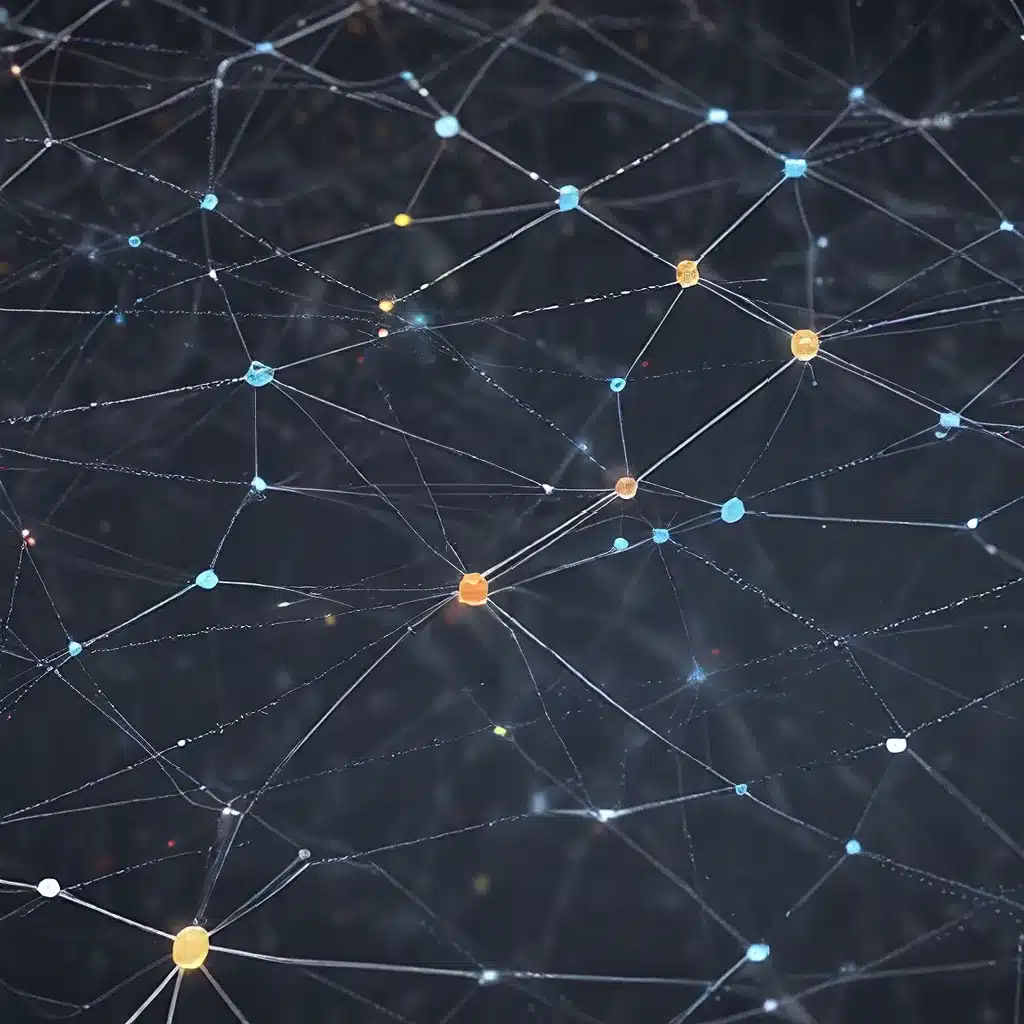
The Rise of Sensor Networks and IoT
Sensor networks and the Internet of Things (IoT) have revolutionized the way we collect, analyze, and utilize data. These technologies have paved the way for unprecedented insights, efficiency, and optimization across a wide range of industries, from smart cities and precision agriculture to predictive maintenance and healthcare monitoring. As the world becomes increasingly interconnected, the demand for robust, scalable, and secure sensor network solutions has never been higher.
At the heart of this revolution lies the synergy between sensor data and advanced analytics. By leveraging distributed algorithms and edge computing, sensor networks are able to process and interpret vast amounts of data in real-time, unlocking valuable insights and enabling quick decision-making. From anomaly detection in industrial environments to personalized recommendations in smart homes, the applications of sensor network technologies are endless.
Sensor-Networks.org is dedicated to exploring the frontiers of sensor network design, IoT applications, and the critical challenges that come with them. In this comprehensive article, we’ll delve into the innovations shaping the future of sensor networks, the security considerations in an IoT-driven world, and the energy management strategies that are crucial for sustainable and efficient deployment.
Distributed Algorithms: The Backbone of Sensor Networks
At the core of sensor network data processing and analytics are distributed algorithms. These algorithms, designed to run across multiple nodes or devices, enable scalable, fault-tolerant, and efficient data management and decision-making.
One of the key advantages of distributed algorithms is their ability to process data closer to the source, reducing the need for centralized data aggregation and minimizing latency. This edge computing approach allows sensor networks to respond to real-time events and make time-critical decisions without the delays associated with transferring data to a central server.
Researchers have developed a range of distributed algorithms specifically tailored for sensor networks, including consensus-based algorithms for coordinating sensor nodes, in-network data aggregation techniques to reduce bandwidth usage, and decentralized machine learning models for predictive analytics.
These innovations have enabled sensor networks to adapt to changing environments, scale to accommodate growing numbers of devices, and maintain high levels of reliability and resilience. By distributing the computational load across multiple nodes, sensor networks can handle complex analytics tasks without overburdening any single point of failure.
Security and Privacy Challenges in the IoT Landscape
As sensor networks become increasingly ubiquitous, the security and privacy concerns associated with IoT devices have become a pressing issue. With billions of connected devices collecting and exchanging sensitive data, the potential for cyber threats and data breaches is a significant challenge that must be addressed.
Experts have identified several key security risks in IoT ecosystems, including weak authentication mechanisms, vulnerabilities in firmware and software updates, and the lack of end-to-end encryption for data transmission. These vulnerabilities can lead to unauthorized access, data manipulation, and even the hijacking of IoT devices for malicious purposes.
To mitigate these risks, sensor network designers and IoT solution providers must adopt a multilayered security approach. This includes implementing robust authentication protocols, secure firmware update mechanisms, and end-to-end encryption to protect data in transit and at rest. Additionally, secure enclaves and hardware-based security can help safeguard the integrity of sensor nodes and the data they collect.
Advancements in blockchain technology and decentralized identity management also hold promise for enhancing the security and privacy of sensor network data, enabling secure data sharing and access control across distributed IoT ecosystems.
Energy Management: Powering the Future of Sensor Networks
As sensor networks continue to expand, the efficient management of energy consumption has become a critical concern. Sensor nodes are often deployed in remote or hard-to-access locations, making battery replacement or recharging a significant challenge. Developing energy-efficient sensor network designs is essential for the long-term sustainability and scalability of these technologies.
One of the key strategies for energy management in sensor networks is the optimization of sensor node duty cycles. By dynamically adjusting the active and sleep states of sensor nodes, based on real-time data needs and environmental conditions, the overall energy consumption can be reduced without compromising data quality or responsiveness.
Additionally, energy harvesting technologies have emerged as a promising solution, allowing sensor nodes to generate their own power from ambient sources, such as solar, wind, or vibration energy. By integrating these energy-harvesting capabilities, sensor networks can operate autonomously for extended periods, reducing the need for manual battery replacements.
Another innovative approach to energy management in sensor networks is the use of distributed, collaborative algorithms that optimize the routing and data transmission within the network. These algorithms balance the energy load across multiple nodes, ensuring that no single node becomes a bottleneck and drains its battery too quickly.
Conclusion: The Future of Sensor Networks and IoT
The synergy between sensor data, distributed algorithms, and advanced analytics has ushered in a new era of smart and connected systems. As sensor networks and IoT technologies continue to evolve, we can expect to see even more transformative applications and breakthroughs in the years to come.
From predictive maintenance in industrial settings to personalized healthcare monitoring, the potential of sensor networks to drive innovation and improve our quality of life is truly remarkable. By addressing the security, privacy, and energy management challenges, sensor network designers and IoT solution providers can ensure that these technologies fulfill their promise of a more efficient, sustainable, and secure future.
At Sensor-Networks.org, we are dedicated to exploring the latest advancements, sharing expert insights, and fostering the growth of this dynamic and impactful field. Stay tuned for more in-depth coverage and thought-provoking discussions on the future of sensor networks and IoT.